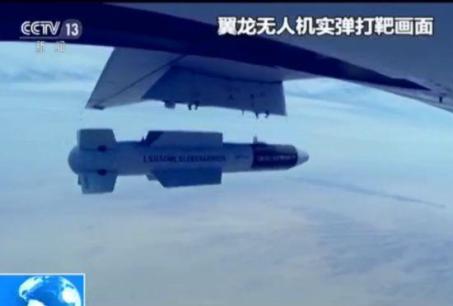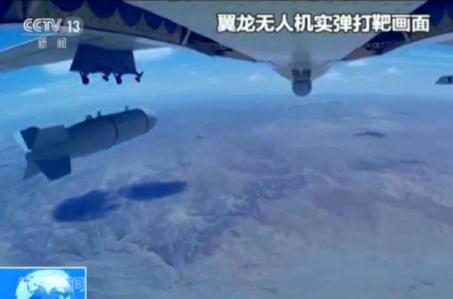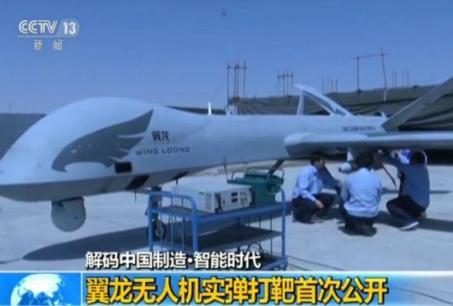FL-3000N / HHQ-10 Missile CIWS Air Defense System maneuvers at 20G | Deagel
FL-3000N anti-missile missile has two frontal and four aft fins to enable maneuverability at 20G
FL-3000N
![[IMG]](http://i.imgur.com/tXNb23O.jpg)
----------
![[IMG]](http://i.imgur.com/b5Wo8Pf.jpg)
FL-3000N unit on the left. Type 1030 CIWS to the right.
----------
FL-3000N uses a "dual Passive Radio Frequency and Imaging Infra-Red seeker for guidance."
Defense Updates: FL-3000N / HHQ-10 Missile CIWS Air Defense System
![[IMG]](http://i.imgur.com/dhXTGz3.jpg)
Lateral maneuverability comparison :
F-35: 5G
Most air-superiority fighters: 9G
Anjian (or Dark Sword) UCAV: 12 to 15G
FL-3000N anti-missile missile: 20G
Saab Visby class corvette
Special Warfare Combat Craft - fast and firepower!
FL-3000N
![[IMG]](http://i.imgur.com/tXNb23O.jpg)
----------
![[IMG]](http://i.imgur.com/b5Wo8Pf.jpg)
FL-3000N unit on the left. Type 1030 CIWS to the right.
----------
FL-3000N uses a "dual Passive Radio Frequency and Imaging Infra-Red seeker for guidance."
Defense Updates: FL-3000N / HHQ-10 Missile CIWS Air Defense System
![[IMG]](http://i.imgur.com/dhXTGz3.jpg)
Lateral maneuverability comparison :
F-35: 5G
Most air-superiority fighters: 9G
Anjian (or Dark Sword) UCAV: 12 to 15G
FL-3000N anti-missile missile: 20G
Saab Visby class corvette
Special Warfare Combat Craft - fast and firepower!
Rainbow 5 : New Heavy Reconnaissance-strike Drone With A Wall-Penetrating Radar
 |
| A Rainbow 5 designer says the new drone is equipped with more advanced technology that better equipped it for future warfare. Photo: Sina.com |
 The
Rainbow 5 is the latest in a series of unmanned aerial vehicles
developed by China Aerospace Science and Technology Corporation. Photo:
Sina News
The
Rainbow 5 is the latest in a series of unmanned aerial vehicles
developed by China Aerospace Science and Technology Corporation. Photo:
Sina News  Select guests get a close-up look at the Rainbow 5 military drone. Photo: CNTV
Select guests get a close-up look at the Rainbow 5 military drone. Photo: CNTV  A vehicle tows the Rainbow 5 drone to position on a runway on the day of the UAV's test flight. Photo: Sina News
A vehicle tows the Rainbow 5 drone to position on a runway on the day of the UAV's test flight. Photo: Sina News |
| Rainbow 5 new drone has a take-off weight of more than three tonnes and similar to that of the United States’ Reaper drone (above). Photo: AP |
 Rainbow 5 military drone is capable of performing missions without ground support. Photo: Sina.com
Rainbow 5 military drone is capable of performing missions without ground support. Photo: Sina.comRainbow 5, or Caihong 5 (CH-5), is the latest in a series of unmanned aerial vehicles developed by China Aerospace Science and Technology Corporation to hunt and kill in battle.
The Rainbow 5’s test flight was conducted “recently” at an undisclosed airfield in Gansu province, state-run China Central Television reported 8yesterday.
The test flight comes ahead of a massive military parade to be held in Beijing on Thursday that will showcase cutting-edge technology.
For instance, with a one-tonne carrying capacity – 2 1/2 times more than its previous model – the Rainbow 5 can lift off with a wall-penetrating radar to identify and track targets inside a building.
The drone’s chief designer, Ou Zhongming, said this kind of radar would change the way military drones were used in the country’s counterterrorism missions.
At present, Chinese drones cannot open fire until they receive confirmation from ground personnel on targets hidden within buildings.
That is why the drones have – until now – been playing only a supporting role to conventional military operations.
But all this was set to change, as the Rainbow 5 took a bigger role in future missions, Ou said.
“Terrorists have their hideouts. They can hide in a bush or in a house. That requires us to go through walls and identify the objects inside,” Ou said in the CCTV report.
The Rainbow 5 could also perform missions with little or no ground support – another feature that would bring major changes to China’s airstrike strategies – the chief designer said.
The use of wall-penetrating radar on drones is not a Chinese invention. The US military has reportedly tested the technology on numerous missions in the Middle East.
But another Rainbow 5 designer, Lan Wenbo, said the new Chinese drone was equipped with more advanced technology that better equipped it for future warfare.
“It can also support and protect other drones with electronic warfare devices, such as suppressing the enemy’s radar. It will significantly increase the effectiveness of an attack,” Lan said.
The Rainbow 5’s first flight lasted about 20 minutes, CCTV reported. The drone, which has room for six missiles, can stay in the air for more than 30 hours.
China is the world’s biggest drone maker, with some civilian models dominating the global market.
But the technology used in Chinese military drones still lags that of the US because of a lack of advanced sensors and powerful, reliable engines, according to some mainland experts.
Stephen Chen in SCMP. binglin.chen@scmp.com
Scientists Turn Iron Man Suit into Reality
The U.S. movie "Iron Man" features business tycoon Tony Stark, who invented a robotic suit that gave him inexhaustible power to fight villains.
But when that suit is brought to the real world, it would be too heavy and unwieldy that even "Iron Man 3's" lead actor Don Cheadle remarked that it was "not really cool at all" to play as the superhero in the suit.
Chinese scientists from the Institute of Advanced Manufacturing Technology in Changzhou, Jiangsu Province, recently finished an exoskeleton that enables ordinary people to climb mountains while carrying 30 kilograms of gear or punch through a wall with no sweat.
Unlike the hyper red color and cool looks of the Iron Man suit, the exoskeleton resembles an iron skeleton with a multitude of sensors and electric wires. It senses the wearer's neuromuscular signals and reacts with the corresponding action.
"Artificial intelligence will bring us into the second machine age--an age featuring exponential growth, digitization and combined innovation," Tan Tieniu, deputy secretary-general of the Chinese Academy of Sciences, said at a Brain-Inspired Intelligence Forum in June.
One application of the exoskeleton would be in combat soldiers. This would give them enough strength and boost their fighting capacity. Another use would be superhuman abilities ideal in emergency situations, such as fire fighting and earthquake rescues.
Exoskeletons can also be used in the medical industry, making it possible for disabled people to walk or make movements, such as kicking a ball. An example would be the 29-year-old paraplegic Juliano Pinto, who used a mind-controlled exoskeleton to kick a soccer ball to commence the games at the 2014 FIFA World Cup in Brazil.
When a person desires to move using the mind-controlled exoskeleton, the electrode cap senses the change in brain waves of the person and responds with the movement almost real-time. Meanwhile, the neuromuscular sensors can only detect the body's movement when the person starts to move, so they respond slower.
Mind-controlled machines have been a research topic in the neuroscience field since the 1970s at the University of California, Los Angeles.
With increasing triumphs in usage of mind-controlled machines, governments are investing more money into this technology.
The BRAIN program, or Brain Research through Advancing Innovative Neurotechnologies, was announced by U.S. President Barack Obama in April 2013. The president gave $100 million to study and map the human brain.
The European Union's Horizon 2020, the biggest EU research and innovation program, also focuses on brain research.
According to Yang Zhi, a cognitive neuroscience researcher at the Chinese Academy of Science's Institute of Psychology, in spite of the fact that people can use their minds to control external devices, machines are still incapable of understanding human thoughts.
The same technology has also been used to examine the brain activity of patients in a crippled state to get their answers to questions like, "Can you feel any pain?"
Relating human thought to corresponding brain activity is paramount to diversifying the usage and application of mind control, Yang said.
Best Chi Demonstrations
Live Ammunition Firing Test of Yilong Drone

Yilong drone live ammunition test

Yilong drone hits its target in live ammunition

Yilong drone firing its air-to-ground weapon

Yilong drone
A-10 Thunderbolt In Action
US Army SMDC - Army Forces Strategic Command (ARSTRAT) Global Command







